What To Do In Your Tucson-area Yard In February
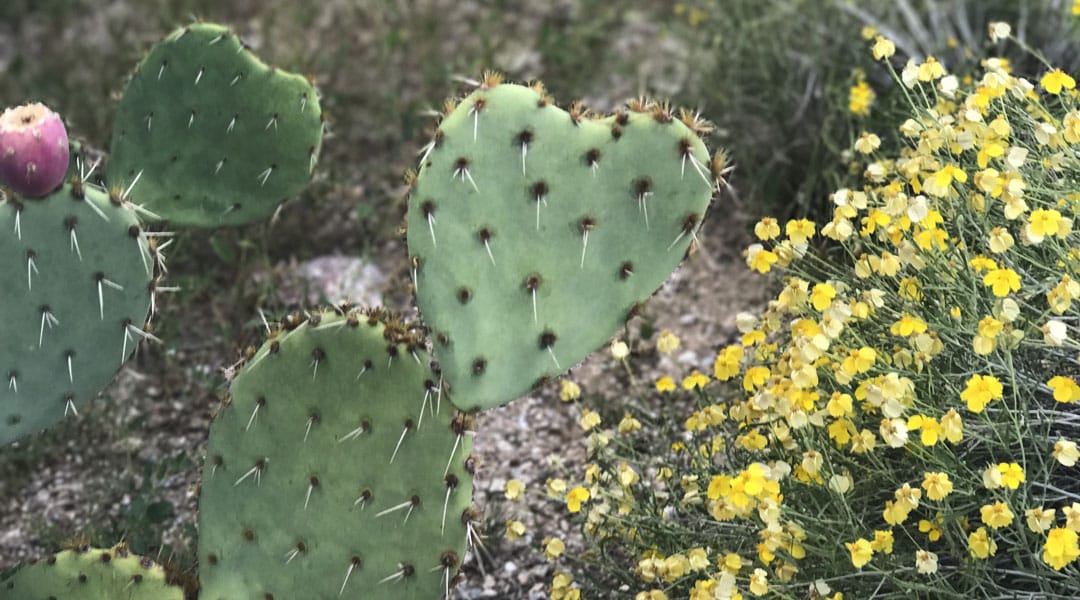
February is all about tomatoes! And a little bit about peppers and cilantro. Basically, if you like any of the ingredients in salsa, this is your month!
Plus, we go over some tasks to do in your yard and garden during February – an interesting month as the weather starts to warm up but there’s still the danger of frost.
Winter rains bring…weeds!
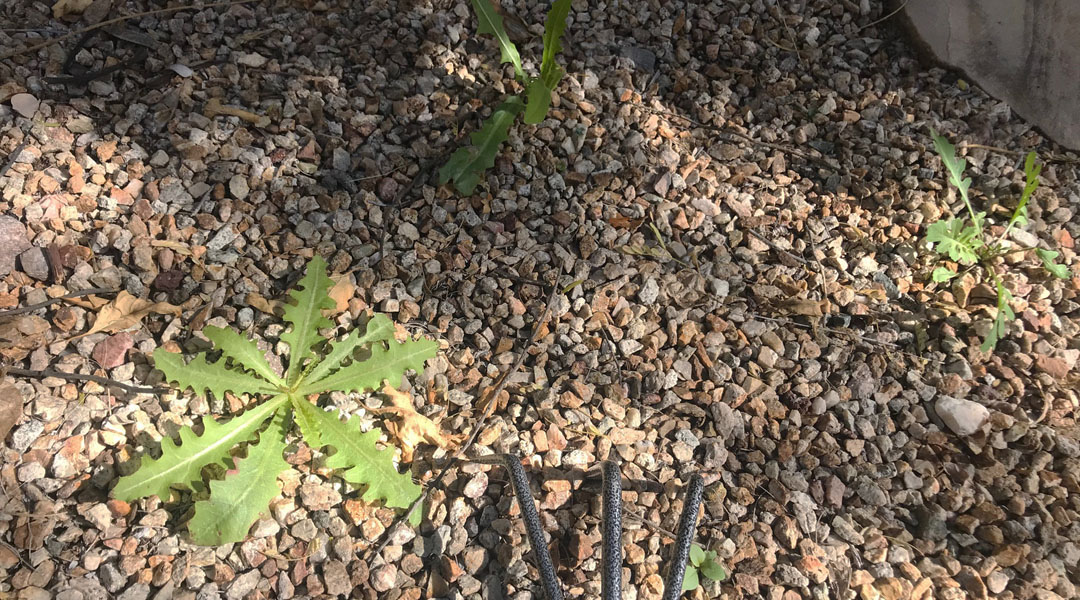
Weeds pop up after winter rains in Tucson
Many Tucson yards are full of weeds this time of year, thanks to some winter rainfall. I find it easiest to pull them while the ground is still wet, but if you don’t want a full yard of weeds you may want to get rid of them as you see them. If you can’t get rid of the weeds right away, try to at least snip off the tops to keep them from going to seed – as that will just lead to more weeds!
Watch for pests
The rising temperatures signal the start of many types of insects and pests returning.
Aphids are some of the first you may spot, so if you notice them taking over your plants, blast them with a hard spray from your garden hose. The water will knock them off and they won’t be able to reinfest your plants. There’s no need to “go nuclear” on aphids with pesticides; water usually does the trick.
Protect from frost damage
The last average frost date in the Tucson area is February 15, but it can still get below freezing at night through mid-March.
If you grow anything frost-sensitive, keep frost cloths handy to cover them if the nights get too cold. Cover cactus tips with styrofoam cups or cloth bags. Avoid using plastic cups or rolls of plastic sheeting; plastic provides much less protection from the cold.
While it may be tempting to prune away any frost-damaged parts of your plants and shrubs (I have a bougainvillea that looks awful, personally), it’s best to wait until you see new growth before pruning away the damaged sections. The dead sections protect the live sections from any further frost damage.
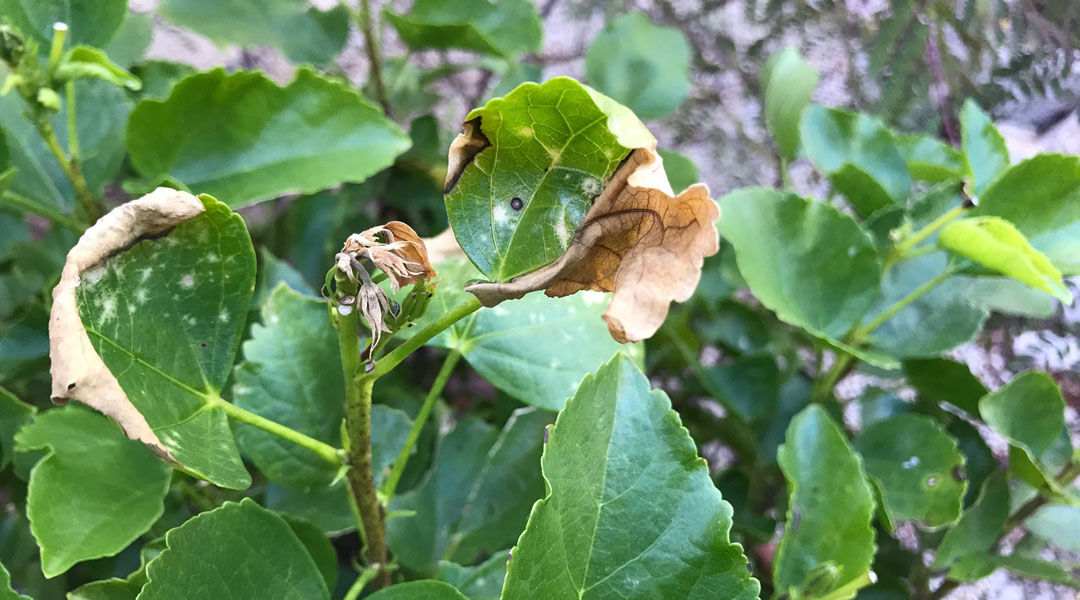
Wait to prune any frost damage from your plants and shrubs, like the leaves on this hibiscus plant
Prune deciduous trees
February is a good time to prune deciduous trees. Be sure you know what you’re doing before you start!
Focus on removing:
- dead, damaged or diseased branches
- branches that detract from the desired shape of the plant
- branches that are growing inward, crossing, or rubbing against other branches
- branches that are blocking access, hitting nearby structures, or in the way
Be sure not to prune too much – trees need branches for leaves so they can get energy! (It’s that whole photosynthesis thing).
Don’t top trees and don’t prune them so that they resemble a “lion’s tail” (by leaving only a small amount of growth at the end of a branch). Leave plenty of branches and leaves to maintain the size and structure of the tree. If you need to prune more than that, you probably have the wrong sized tree for the space in which it is planted.
And if you’re ever in doubt about how or whether to prune your trees, please call in an ISA Licensed Arborist. They’re tree service experts who understand how trees grow, how they react to pruning, and the best methods for improving tree structure, health, and appearance.
Start warm-season vegetables, herbs & annuals indoors in early February
Heat-loving vegetables and fruit, such as tomatoes, tomatillos, and peppers, can still be started from seed indoors in early February (although January is a better time to start them). This will allow you to transplant them outdoors in late February to get a jump-start on the growing season. They may need frost protection but you should get in a good crop of ripe fruit before temperatures get too hot.
Several herbs can also be started indoors this month, including:
- marjoram,
- sage, and
- thyme.
Your herb seedlings can then be planted outdoors in March after the ground has warmed up a bit – they don’t like cold feet!
Some annuals are also best started indoors in early February, such as:
- cosmos,
- shasta daisy, and
- marigold.
Sow or transplant cool-season vegetables & annuals
You can still plant cool weather vegetables during the first part of February. But once we get into the second half of the month, it’s best to wait until fall to sow cool-season crops. Although they’ll sprout and grow, you’re unlikely to get much of a harvest before temperatures get too warm for these types of plants.
Sow these from seed (you should sow these vegetables before mid-February)
- Arugula
- Beets (through March 31)
- Cabbage
- Chinese Cabbage
- Carrots
- Cauliflower
- Celery
- Cilantro
- Collards
- Dill
- Fennel
- Kale
- Kohlrabi
- Leek
- Lettuce
- Peas
- Mustard
- Parsley
- Onions (“short-day” bulb onion sets, green bunching onions)
- Radishes
- Spinach
- Swiss chard
- Turnips
- Nasturtium (after Feb 15)
- Sunflower (after Feb 15)
- Candytuft (after Feb 15)
Transplant these as seedlings (many of these can also be sowed directly into the garden from seed until mid-February)
- Artichoke
- Asparagus
- Broccoli
- Cabbage
- Chinese cabbage
- Cauliflower
- Celery
- Cilantro
- Collards
- Dill
- Fennel
- Kale
- Lettuce
- Mustard
- Parley
- Spinach
- Swiss Chard
Plant tomatoes
If you planted tomatoes in the fall, they should be ready to harvest. February is the ideal time to plant tomatoes in Tucson, but it can be tricky as there is still the chance of frost. Either wait until after the chance of frost is past (usually after February 15), or be ready to cover your plants if it gets too cold. You can use products like pop-up accelerators (I like this one from Gardener’s Supply), hot hats, or water walls to ensure your plants don’t get too cold once you transport them outdoors.
Because the temperatures will begin rising – and rising rapidly – look for varieties of tomatoes that mature in 60 or 90 days. Many Tucson gardeners have more success with smaller tomatoes (such as cherry and pear tomatoes) than full-size ones for this reason, but it varies depending on your location and microclimate.
Learn more about how to successfully start tomatoes here >>
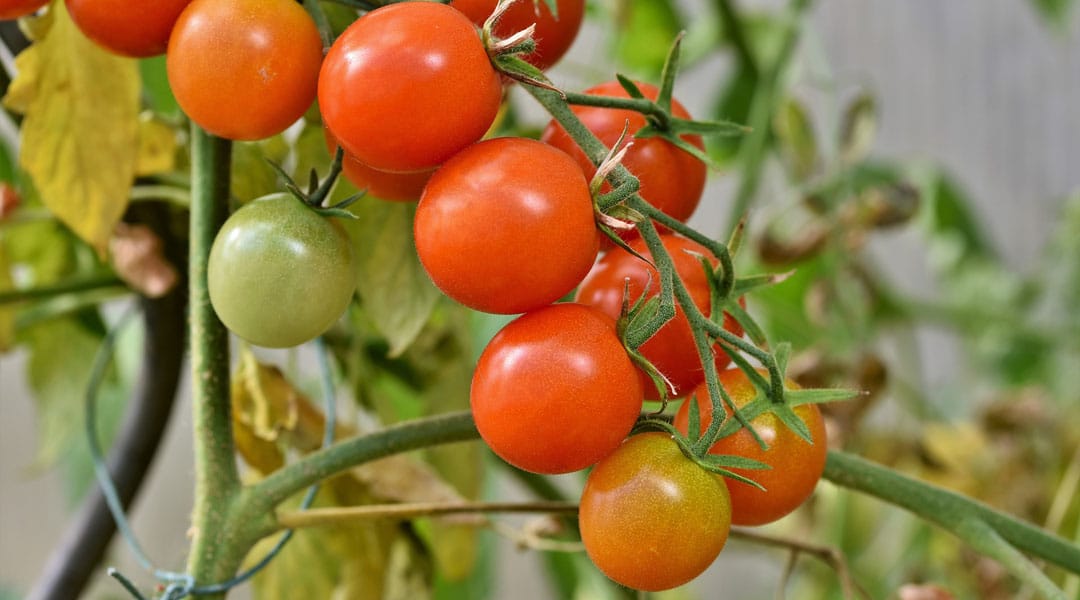
Plant hot and sweet peppers
Similarly to tomatoes, peppers can be planted after the chance of frost has passed. Start them from seed indoors (early January was a good time to do this) and transfer them outdoors after the 15th (or after the last chance of frost).
Peppers love heat, but our hot summers can be a little much for them. Expect some blossom drop and lack of fruiting in the middle of the summer, but the plants should become more productive again after the monsoon season.
If you were able to protect your peppers from frost over the winter, they’re probably starting to leaf out again by the end of February and you can look forward to a second season of fruit!

Pepper seedlings
Plant or sow herbs
Cilantro, dill, and lemon balm can be sowed (or planted) directly in the ground in February. Remember, if you don’t gather the cilantro before it goes to seed, no worries! You now have coriander!
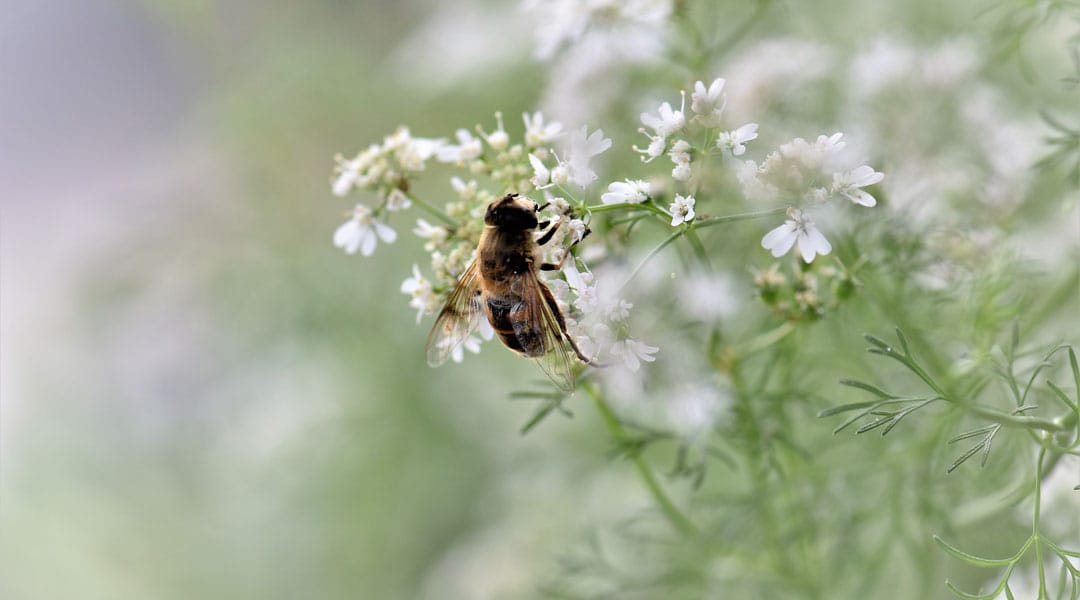
Bees love flowering cilantro / coriander plants
Harvest, fertilize, and prune citrus
My next-door neighbor brought me some mandarin oranges from her daughter’s tree this week, and every time I visit my parents they try to give me lemons. It’s pretty obvious that citrus fruit is ready to harvest – and we have abundant amounts here in Tucson. In fact, the Community Food Bank of Southern Arizona even has a way for you to donate your extra citrus.
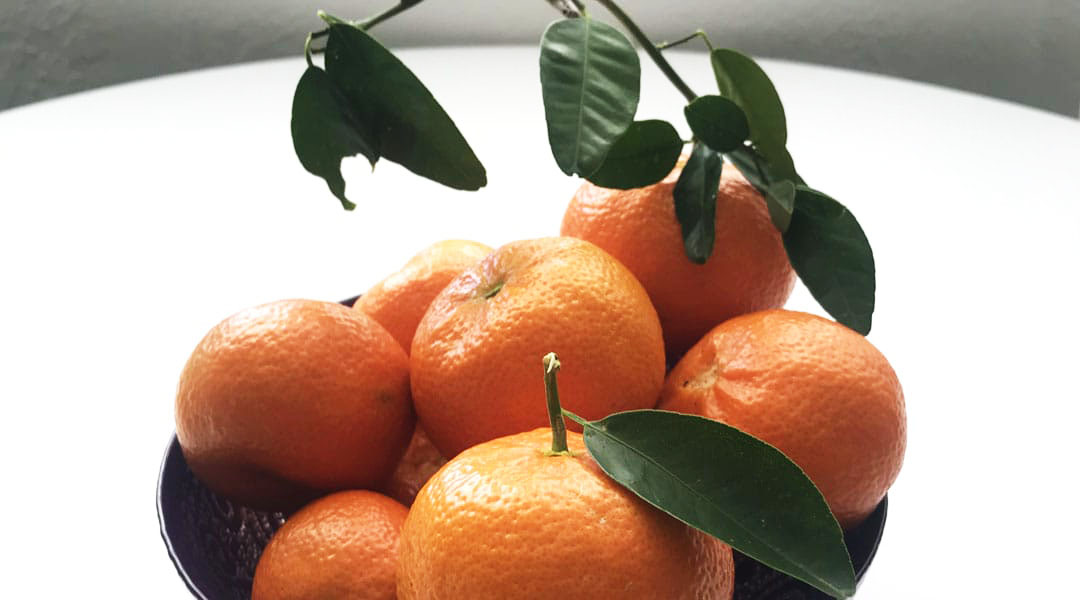
If you like citrus, now is a great time of year to live in Tucson!
For fertilizing citrus, the rule of thumb is to fertilize around Valentine’s Day (that’s this month!), Memorial Day, and Labor Day.
February through April are the best months to prune your citrus trees, but they need to be pruned differently than other deciduous trees.
Learn about citrus tree pruning from the University of Arizona Extension >>
Plant trees
Deciduous trees and pine trees can be planted throughout this month, while desert-adapted trees should be planted later in the month (again, be watchful and look out for low temperatures).
Planning for spring and summer
While you’re planting and pruning and fertilizing – don’t forget to plan! Summer gardening in Tucson is very different than other places in the country. During February, it should still be cool enough during the day to start or complete those yard projects you dreamed about last summer. The warmer days are coming so now is the time to prepare!
Note: External links to Amazon are affiliate links.